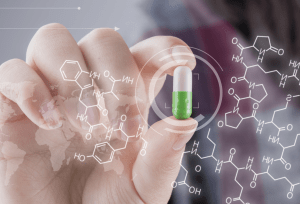AI is revolutionizing drug regulation at every stage—from speeding reviews to improving safety monitoring and replacing animal testing. Here’s a clear and engaging breakdown, complete with real-world examples:
1. Faster, Smarter Drug Reviews
Elsa: FDA’s Generative AI Assistant
In early June 2025, the FDA launched Elsa. This is a secure AI tool for internal use. It helps with clinical protocol reviews, summarizes adverse events, creates database scripts, and finds important inspection targets.
Why it’s impactful: FDA decisions typically take 6–10 months. Elsa frees up reviewers from repetitive tasks, enabling deeper scientific analysis using secure, agency‑only data platforms.
cderGPT on the Horizon
The FDA is reportedly in early-stage discussions with OpenAI around cderGPT, an AI model to assist the Center for Drug Evaluation & Research.
Upside: If deployed responsibly, cderGPT could further compress approval timelines—especially under fast-track and breakthrough designations.
2. Better Safety Monitoring Post-Market
Early Detection of Adverse Events
AI tools process massive real-world datasets—EHRs, lab results, social media—to spot potential safety risks. One study uncovered 21 new side effects of GLP‑1 agonists that were not caught during initial FDA reviews.
Real-Time Surveillance & Bias Control
New FDA-built NLP systems automatically map adverse events to MedDRA codes and prioritize critical safety notifications—speeding up regulators’ response to emerging threats.
3. Clear Frameworks for Trustworthy AI
Credibility Guidance
In January 2025, the FDA released a risk-based framework for AI in regulatory decisions, emphasizing transparency, contextual understanding, and human oversight.
Ongoing Monitoring
The FDA now requires AI models to undergo continuous audits to detect performance drift and ensure models remain reliable over time.
Global Coordination
Efforts are underway to align with the EU AI Act and EMA’s roadmap, promoting harmonized international standards for AI use in drug regulation.
4. AI Translation Solutions Boosting Compliance & Efficiency
While less publicized, AI-powered translation and documentation tools are critical in regulatory workflows:
Ensure Regulatory Compliance & Approval Efficiency
Precise translations of clinical study reports, labels, informed consent forms (ICFs), and patents are vital. Even small errors—like missing adverse event (AE) details—can delay or block approvals, or result in fines and lawsuits.
Example: A mistranslated dosage warning led to patients overdosing, triggering legal action and reputational damage.
Streamlined document submissions
Accurate, on-time translations help pharma companies meet FDA, EMA, and national submission deadlines with fewer hiccups
Optimize Time & Reduce Costs
Translation bottlenecks can delay trials and market launches. One study estimates that each month of delay costs $600,000‑$8 million.
Enhance efficiency
Using CAT and translation memory (TM) tools with expert translators ensures consistency, reduces repeat work, and lowers translation time and cost.
Maintain Consistency and Quality
Consistent use of technical terms (e.g., “bioavailability”, “pharmacokinetics”) is critical to avoid confusion.
Use CAT/TM & review workflows
Glossaries and translation memories improve quality across diverse documents. Proper editing cycles catch mistakes before they reach regulators or patients
These AI solutions smooth the path to market by integrating regulatory requirements directly into development workflows.
5. Challenges & Cautions
Data Quality is Critical
AI depends on credible, representative datasets. Poor inputs lead to poor or biased outputs.
Transparency Is Essential
Regulators demand understandable “how and why” behind AI decisions; “black‑box” models are generally unacceptable.
Regulatory and Legal Gaps Remain
The deployment of AI tools often outpaces existing policy safeguards. Regulatory agencies must ensure that data security measures and model validation frameworks keep pace with technological advancements.
Conclusion: A Cautious Leap Forward
AI is making bold inroads into drug regulation—expediting reviews, sharpening safety surveillance, enabling compliant translation, and reducing reliance on animal testing. These gains are carefully balanced with new regulatory frameworks emphasizing security, validation, transparency, and global coordination.





